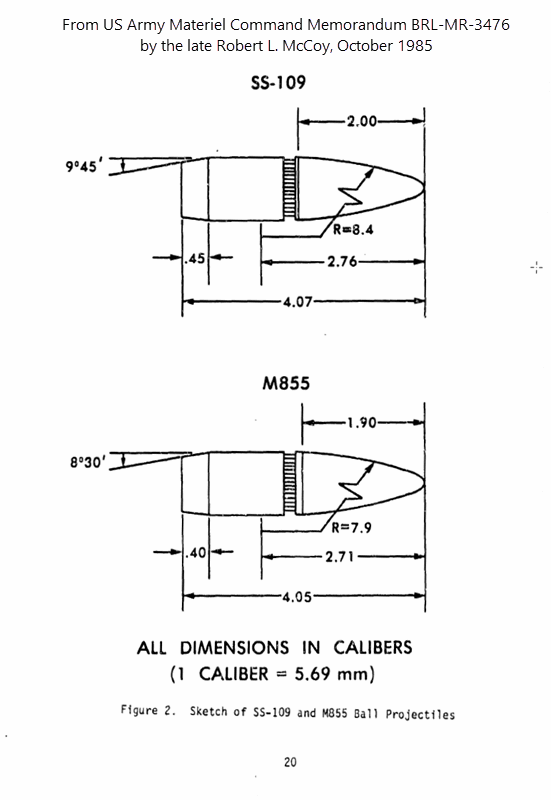Hello, its my first post in FLF, thank you for reading.
A few years back in the 2012 scare, I purchased ALOT of pulled 62 grain SS109s amoung other things. I spent some time learning since then working with other things and decided that I probably should start doing SOMETHING with them. I did a lot of reading and found that H335 seems to be the best powder to work with and I have enough on hand. I also have a large amount of H322 left over from another project.
Here is the issue: As part of a trade, a friend gave me a 5 gallon pail full of deprimed brass that he "trimmed" to the minimum. He said he does that so that all his cases are uniformed when he loads them. At the time, it sounded fair enough, but now after I cleaned them all up and actually measured them I found that they range from 1.741 to 17.49 alot of them seem to be around 1.744/5 but its really hit or miss.
Here is the question. My best understanding for the COL with the mil 62gr bullet is 2.260; should I:
a) Drive on with this projecting using H335, blazer primers I'd set aside and these mixed cases
b) Drive on with this project using H322, blazer primers and these mixed cases because the longer bullet in the shorter case, with H322, will take less room.
c) Leave the M855 project for another day until I get more brass. Use my left over H322, leftover Winchester primers and a bucket of plain jane FMJ 55grn Hornady bulk bullets with these mis-matched cases and make them into a nice target load.
If we were talking about a few hundred, I wouldn't care, but likely this is going to be thousands of rounds. Thanks for your advice.
A few years back in the 2012 scare, I purchased ALOT of pulled 62 grain SS109s amoung other things. I spent some time learning since then working with other things and decided that I probably should start doing SOMETHING with them. I did a lot of reading and found that H335 seems to be the best powder to work with and I have enough on hand. I also have a large amount of H322 left over from another project.
Here is the issue: As part of a trade, a friend gave me a 5 gallon pail full of deprimed brass that he "trimmed" to the minimum. He said he does that so that all his cases are uniformed when he loads them. At the time, it sounded fair enough, but now after I cleaned them all up and actually measured them I found that they range from 1.741 to 17.49 alot of them seem to be around 1.744/5 but its really hit or miss.
Here is the question. My best understanding for the COL with the mil 62gr bullet is 2.260; should I:
a) Drive on with this projecting using H335, blazer primers I'd set aside and these mixed cases
b) Drive on with this project using H322, blazer primers and these mixed cases because the longer bullet in the shorter case, with H322, will take less room.
c) Leave the M855 project for another day until I get more brass. Use my left over H322, leftover Winchester primers and a bucket of plain jane FMJ 55grn Hornady bulk bullets with these mis-matched cases and make them into a nice target load.
If we were talking about a few hundred, I wouldn't care, but likely this is going to be thousands of rounds. Thanks for your advice.

